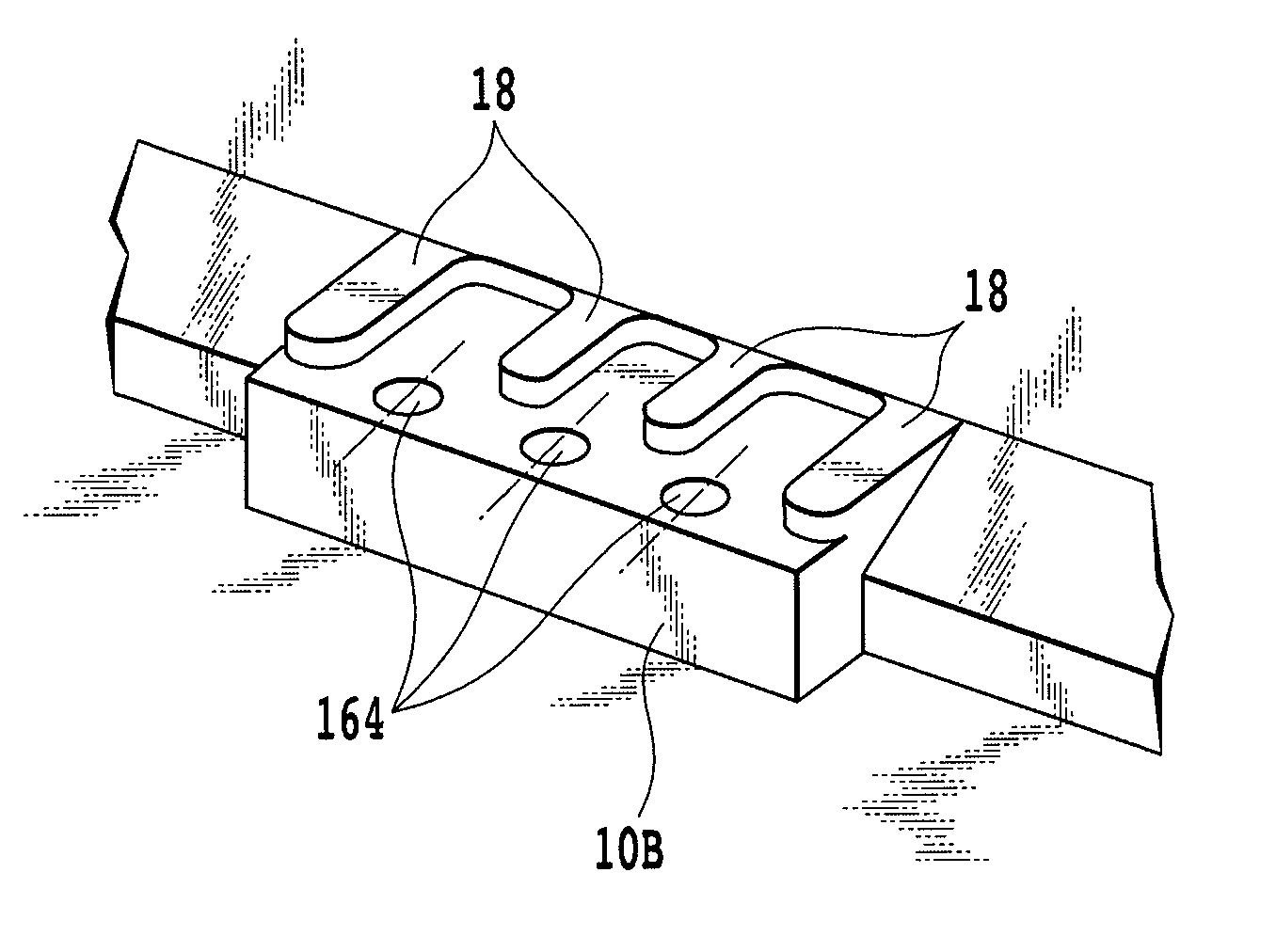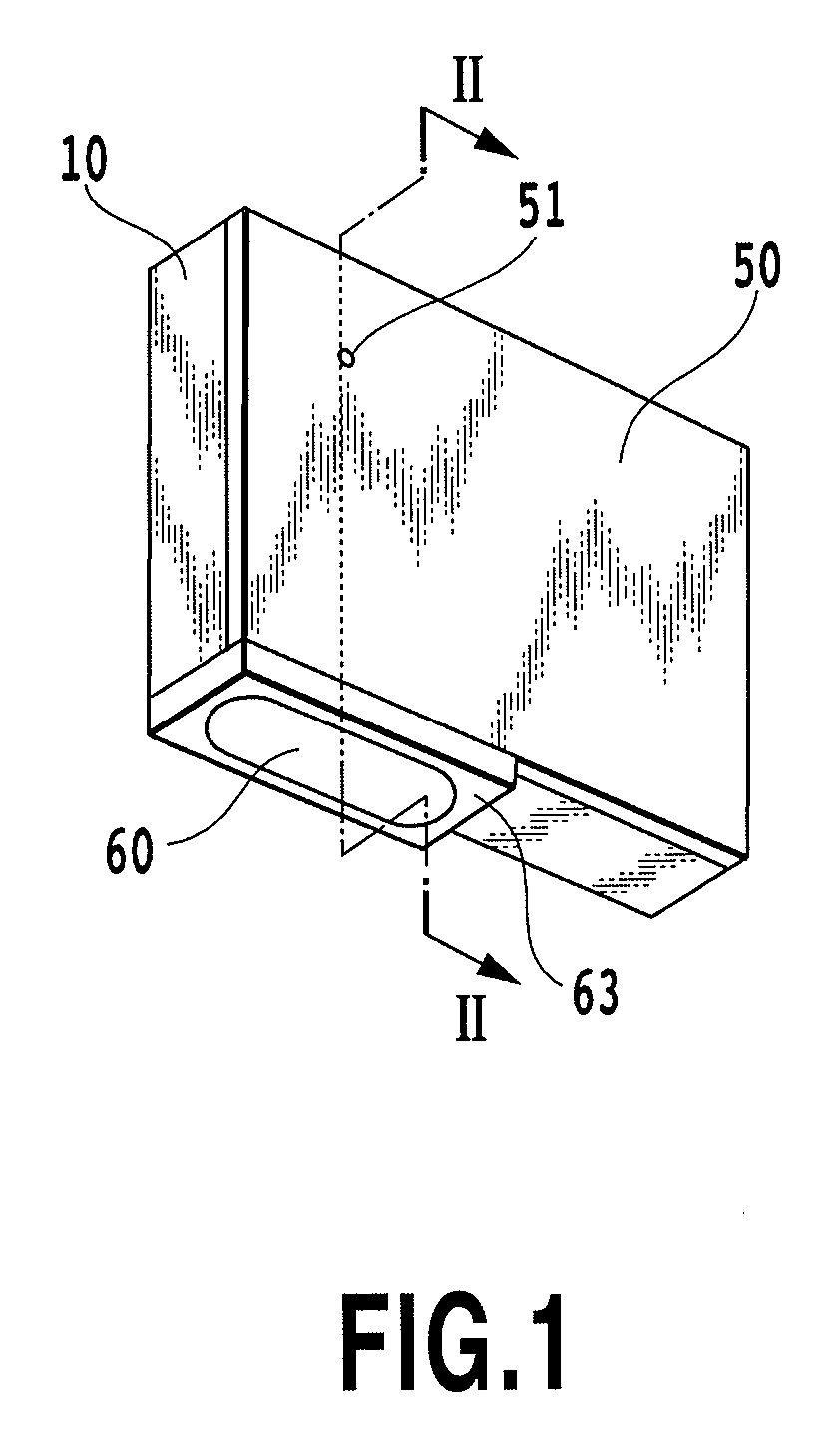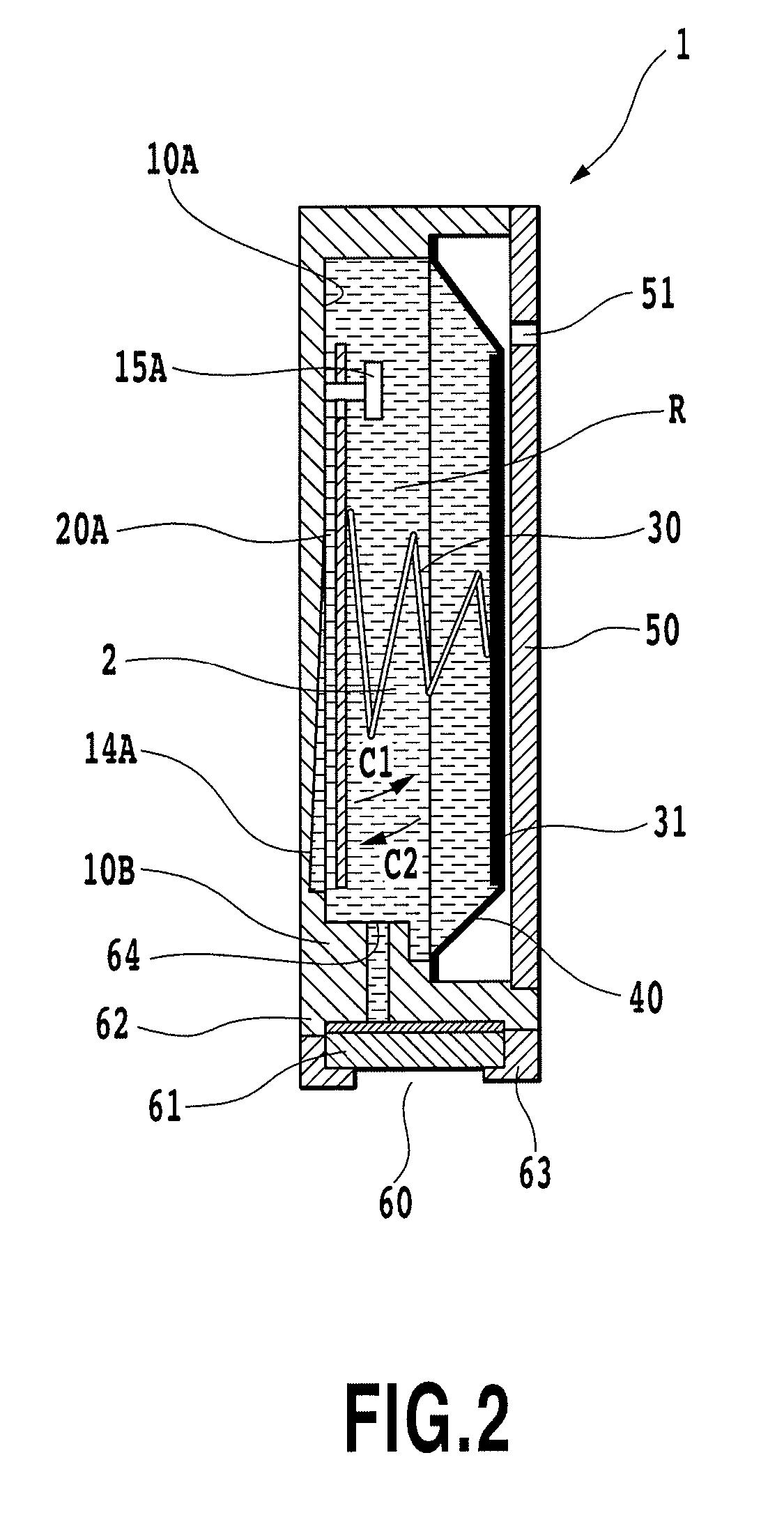Ink tank
a technology of ink tanks and ink sheets, applied in the field of ink tanks, can solve the problems of excessively dense ink in the bottom excessively light ink in the uppermost portion of the ink tank, and print matters with dye inks to exhibit, so as to achieve stable ink led out or supplied, effective prevention of problems, and high agitation performan
- Summary
- Abstract
- Description
- Claims
- Application Information
AI Technical Summary
Benefits of technology
Problems solved by technology
Method used
Image
Examples
second embodiment
[0091]FIG. 11A is a schematic perspective view showing an internal configuration of an ink tank according to a second embodiment of the present invention. FIG. 11B is a partially enlarged view showing the internal configuration thereof. Component parts which are the same as those of the first embodiment will be denoted by the same reference numerals, and descriptions thereof will be omitted.
[0092]The ink tank according to this embodiment includes three ink leading-out ports 164 formed in a flat surface. This forming surface is not a horizontal surface, but a surface which is inclined to the gravitational direction when the ink tank is attached to the printing apparatus. In a case where the tank case 10 is a resin-molded component, the inclination angle of this forming surface may be an angle formed corresponding to a generally-used draft which is needed when a die is formed. In addition, convex-shaped bumps 18 extend from the inner wall 10A of the ink containing chamber along both o...
PUM
 Login to View More
Login to View More Abstract
Description
Claims
Application Information
 Login to View More
Login to View More - R&D
- Intellectual Property
- Life Sciences
- Materials
- Tech Scout
- Unparalleled Data Quality
- Higher Quality Content
- 60% Fewer Hallucinations
Browse by: Latest US Patents, China's latest patents, Technical Efficacy Thesaurus, Application Domain, Technology Topic, Popular Technical Reports.
© 2025 PatSnap. All rights reserved.Legal|Privacy policy|Modern Slavery Act Transparency Statement|Sitemap|About US| Contact US: help@patsnap.com



